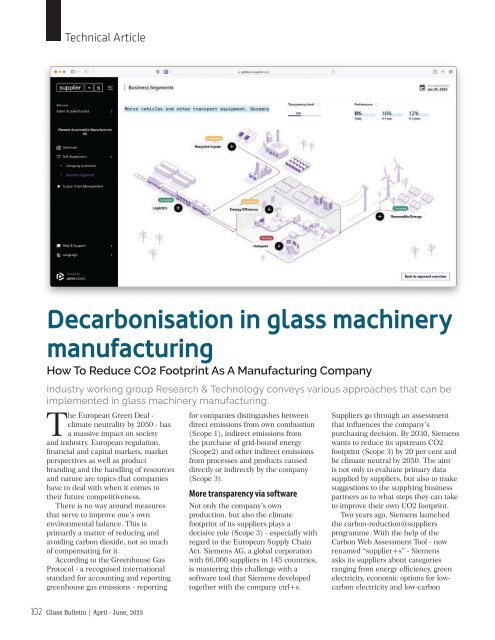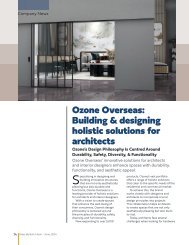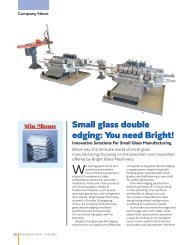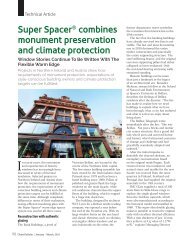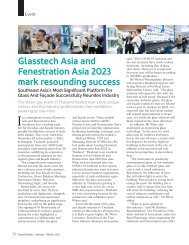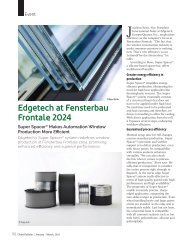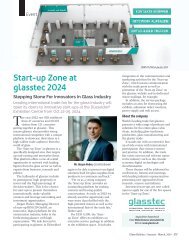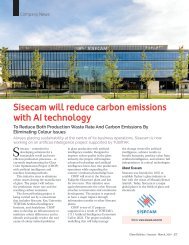Edition 70 (April-June, 2023)
You also want an ePaper? Increase the reach of your titles
YUMPU automatically turns print PDFs into web optimized ePapers that Google loves.
Technical Article<br />
Decarbonisation in glass machinery<br />
manufacturing<br />
How To Reduce CO2 Footprint As A Manufacturing Company<br />
Industry working group Research & Technology conveys various approaches that can be<br />
implemented in glass machinery manufacturing.<br />
The European Green Deal -<br />
climate neutrality by 2050 - has<br />
a massive impact on society<br />
and industry. European regulation,<br />
financial and capital markets, market<br />
perspectives as well as product<br />
branding and the handling of resources<br />
and nature are topics that companies<br />
have to deal with when it comes to<br />
their future competitiveness.<br />
There is no way around measures<br />
that serve to improve one’s own<br />
environmental balance. This is<br />
primarily a matter of reducing and<br />
avoiding carbon dioxide, not so much<br />
of compensating for it.<br />
According to the Greenhouse Gas<br />
Protocol - a recognised international<br />
standard for accounting and reporting<br />
greenhouse gas emissions - reporting<br />
for companies distinguishes between<br />
direct emissions from own combustion<br />
(Scope 1), indirect emissions from<br />
the purchase of grid-bound energy<br />
(Scope2) and other indirect emissions<br />
from processes and products caused<br />
directly or indirectly by the company<br />
(Scope 3).<br />
More transparency via software<br />
Not only the company’s own<br />
production, but also the climate<br />
footprint of its suppliers plays a<br />
decisive role (Scope 3) - especially with<br />
regard to the European Supply Chain<br />
Act. Siemens AG, a global corporation<br />
with 66,000 suppliers in 145 countries,<br />
is mastering this challenge with a<br />
software tool that Siemens developed<br />
together with the company ctrl+s.<br />
Suppliers go through an assessment<br />
that influences the company’s<br />
purchasing decision. By 2030, Siemens<br />
wants to reduce its upstream CO2<br />
footprint (Scope 3) by 20 per cent and<br />
be climate neutral by 2050. The aim<br />
is not only to evaluate primary data<br />
supplied by suppliers, but also to make<br />
suggestions to the supplying business<br />
partners as to what steps they can take<br />
to improve their own CO2 footprint.<br />
Two years ago, Siemens launched<br />
the carbon-reduction@suppliers<br />
programme. With the help of the<br />
Carbon Web Assessment Tool - now<br />
renamed “supplier+s” - Siemens<br />
asks its suppliers about categories<br />
ranging from energy efficiency, green<br />
electricity, economic options for lowcarbon<br />
electricity and low-carbon<br />
102 Glass Bulletin | <strong>April</strong> - <strong>June</strong>, <strong>2023</strong>


